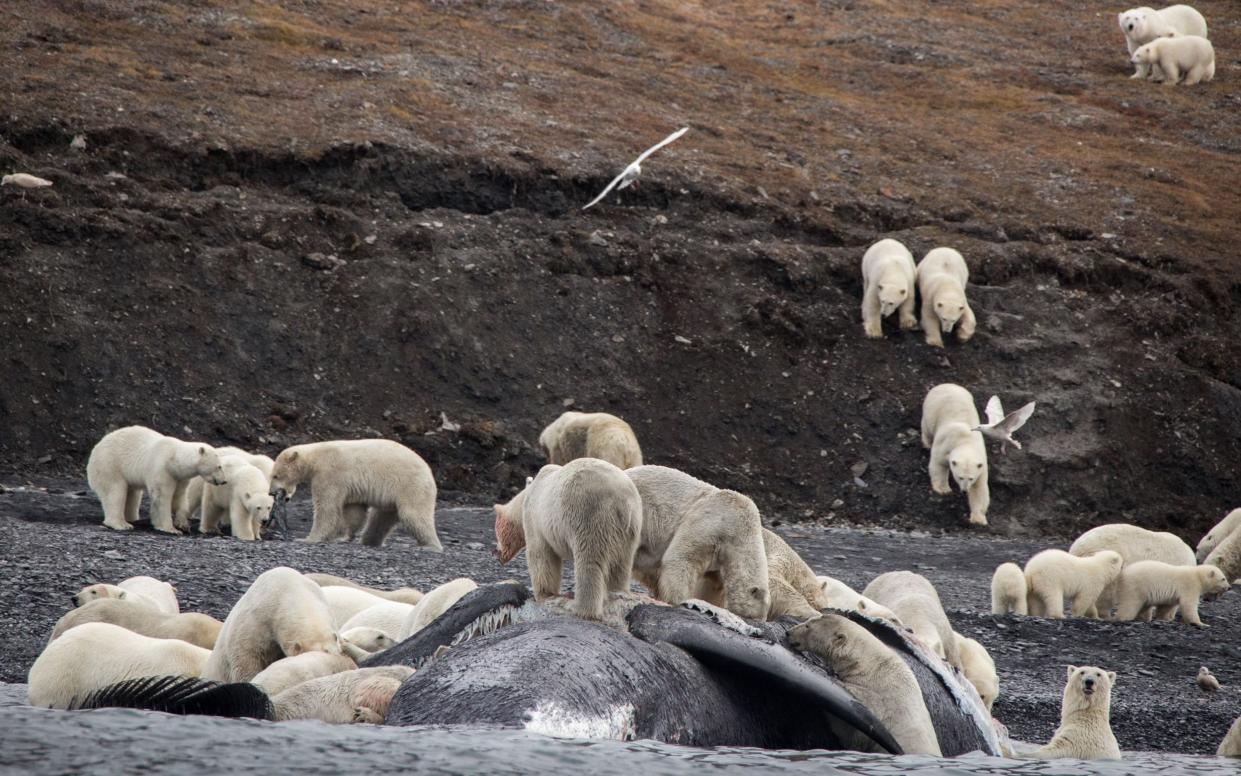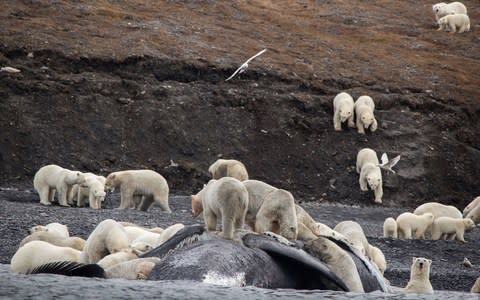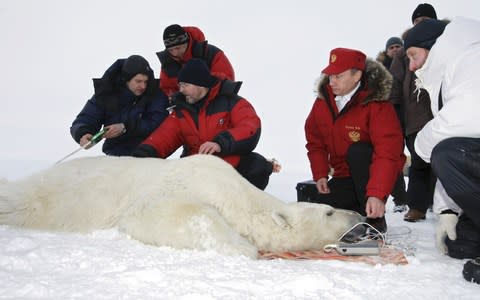Russian town besieged by polar bears forced off melting Arctic ice

A coastal town in the Russian Arctic has been besieged by hungry polar bears who are spending more time on land as sea ice melts due to climate change.
At least six bears near Dikson, the most northern inhabited place in Russia, have kept its 500 or so residents “gripped with fear” whenever they venture outside, Russian state television reported late last month.
Mobile phone footage has captured several terrifying confrontations with the world's largest land-based predator, which can weigh 1,300 pounds or more and run up to 25 miles per hour.
The town will remain at risk until the bears go back out on the sea ice, which is not expected to form until mid-November, experts told The Telegraph.
This week a young bear had to be captured and sent to a zoo in the regional centre of Krasnoyarsk after it began regularly roaming the streets of the town and nosing around homes.
One man in Dikson was forced to face down the “tsar of the Arctic” after a polar bear chased him over a low cement wall. The creature walked up to him and began nuzzling his leg before it was scared off by a gunshot.

The curious polar bears have mainly been searching for open rubbish bins in Dikson, as calorie-rich human food is hard to resist once they discover it.
They are mostly active all year round and always eager to eat, while pregnant females in particular need to build up huge fat stores in the autumn before they hibernate and give birth in their winter snow den.
“Naturally, when [a polar bear] finds a place where household rubbish builds up, he marks it as his territory and tries to defend this territory,” Alexander Korobkin, deputy natural resources minister of the region, told journalists.
Only a handful of humans have dangerous encounters with polar bears each year. The risk of run-ins is growing, however, as human activities in the Arctic grow and climate change causes the region to warm even faster than the rest of the earth.
Polar bears prefer to spend most of their time on floating sea ice, an ideal platform to hunt for the seals that form the basis of their diet.
But as the ice pack melts and retreats earlier in the year, more and more bears are forced to spend the summer on land. In North America, this has even led to the appearance of “grolars” and “pizzlies,” hybrids born of mating between polar bears and grizzlies.
“Polar bears still haven't adapted to the rapidly changing variations in the condition of the ice, so a large number of the animals are staying on islands and the coast,” Russian polar bear expert Ilya Mordvintsev told The Telegraph.

Although the ice remained fairly late in the Kara Sea in the Russian Arctic this year, it broke up so quickly in July that many bears didn't have time to get onto the withdrawing ice sheets, he explained.
Mr Mordvintsev led an expedition this summer that put tracking collars on six polar bears to try to understand how their movements are changing with the rising temperature.
Meanwhile, Russia has been developing energy projects in the Arctic and building infrastructure for a northern sea route it hopes will be more attractive for shipping to and from China.
Leading private producer Novatek announced last week that it had discovered another major Arctic gasfield.
In December, Vladimir Putin personally cut the ribbon on Novatek's Sabetta liquified natural gas plant on the Arctic coast, which sent its first gas shipment to the UK.
Moscow's expanding military activity and new bases in the far north prompted the UK to announce a “defence Arctic strategy” last month that will see a British base with 800 commandos built in Norway.
Given the rising threat of confrontations like those in Dikson, state emergency responders and private companies need to adopt rules for dealing with polar bears, Mr Mordvintsev said.
While the protected animals have reportedly been becoming less fearful of gunshots, snowmobiles and harmless flashbangs can run them off if used correctly.
To deal with the one-and-a-half-year-old bear lurking around Dikson, which had become separated from its mother in a storm, the Krasnoyarsk zoo and an environmental nonprofit built a special cage to trap him rather than trying to tranquilise him.
They plan to install “baby boxes” with dried milk and meat in Dikson. That's so locals don't try to feed small polar bears human food, like a group of Russians did in a viral video in 2016, giving a bear a sandwich and crackers through a window.
The effort is meant to save some of the dozen or so orphaned bears found in the Arctic each year.

 Yahoo News
Yahoo News 
